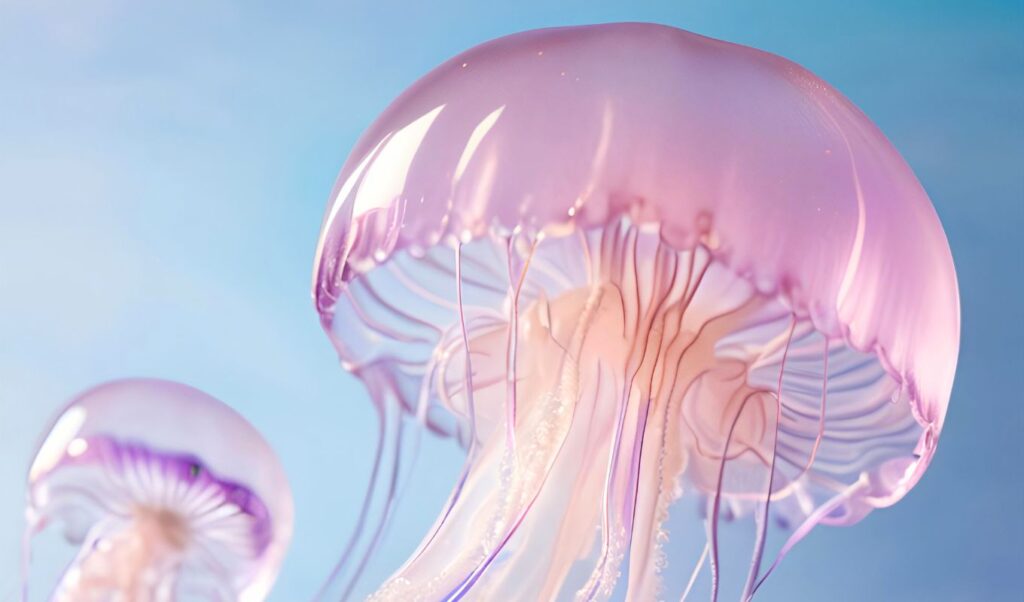Climate change and rising temperatures are causing greater concerns for a new outbreak of purple jellyfish in Greek waters, creating doubts among beachgoers who want to take advantage of ideal weather for beach visits.
Specifically, experts from the Greek Biodiversity Observatory reported that the purple jellyfish population is surging, particularly in the Pagasetic Gulf and surrounding areas, where analysts’ estimates were underestimated, as the rate of spread is much faster than expected.
Purple jellyfish: New outbreak in Pagasetic Gulf
More specifically, according to the Greek Biodiversity Center, the purple jellyfish (Pelagia noctiluca) shows periodic population outbreaks in various Mediterranean marine areas. Traditionally, these outbreaks were observed approximately every 10-12 years and lasted up to four years, with an average of 2-3 years. Such outbreaks were recorded in the Corinthian Gulf (2015-2018) and in Malta (2018-2020, with reappearance in 2022). In the Aegean Sea the outbreak started in October 2020 and ended in 2023, and in the Ionian Sea in summer 2022 and ended in 2024.
However, in May 2025, a new potential outbreak is being observed in the Pagasetic Gulf, causing concern due to its enclosed geography. Understanding these outbreaks requires studying the biological cycle of Pelagia noctiluca, as each life stage is differently affected by environmental factors. For example, the species reproduces successfully at temperatures from 16°C to 27°C, while Greek waters in winter rarely drop below 12°C, a condition that may favor population maintenance throughout the year.
What is the purple jellyfish
The purple jellyfish (Pelagia noctiluca) is a pelagic species living in tropical waters. It is found at depths from 0 to 1600 meters. Maximum length is 12 centimeters in diameter with 4 feeding tentacles and 8 tentacles (nematocysts) around the bell’s perimeter, where the length of these tentacles can reach up to 10 meters (Perseus, Sterrer 1986) when extended for feeding, while young jellyfish have tentacles no longer than their feeding tentacles. Although they may be reported to reach 10 meters, we rarely see them over 2 meters.
It primarily feeds on salps, various ctenophores, planktonic crustaceans, and fish eggs. The jellyfish’s main natural predators are the Leatherback turtle, Loggerhead turtle, Tuna, Swordfish, and Moonfish. When young, its color is orange-brown, and when it matures, it takes on this intense purple-violet color.
Purple jellyfish are considered among the most dangerous jellyfish species in the Mediterranean. Their sting is painful due to the neurotoxin they contain. The nematocysts produce erythema, swelling, burning sensation on human skin, and sometimes serious dermatonecrotic, cardio- and neurotoxic effects, which are particularly dangerous for sensitive individuals. Jellyfish outbreaks can significantly affect human economic activities such as swimming, fishing, tourism, etc.
What are the symptoms of contact with purple jellyfish
Symptoms after contact – stinging by the jellyfish can include:
- Burning pain, often intense skin redness, and in some cases the appearance of the jellyfish’s imprint on part of the skin where you were stung
- Nausea
- Blood pressure drop
- Tachycardia
- Headache
- Vomiting
- Diarrhea
- Bronchial spasm
- Difficulty breathing




